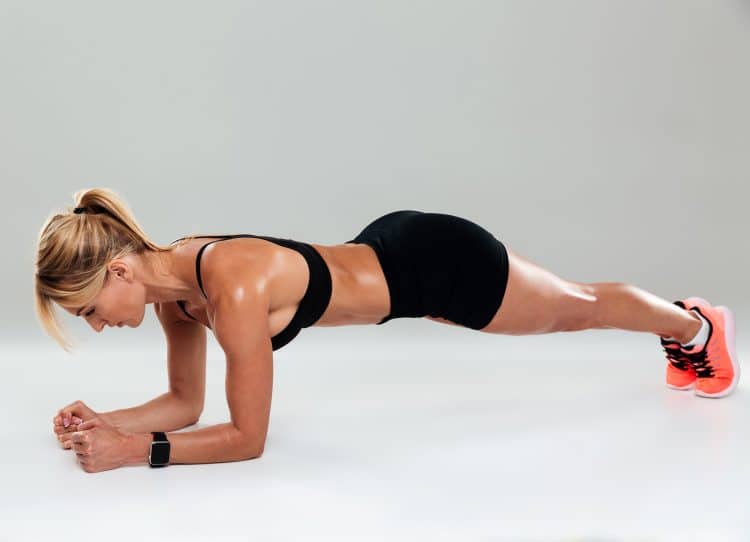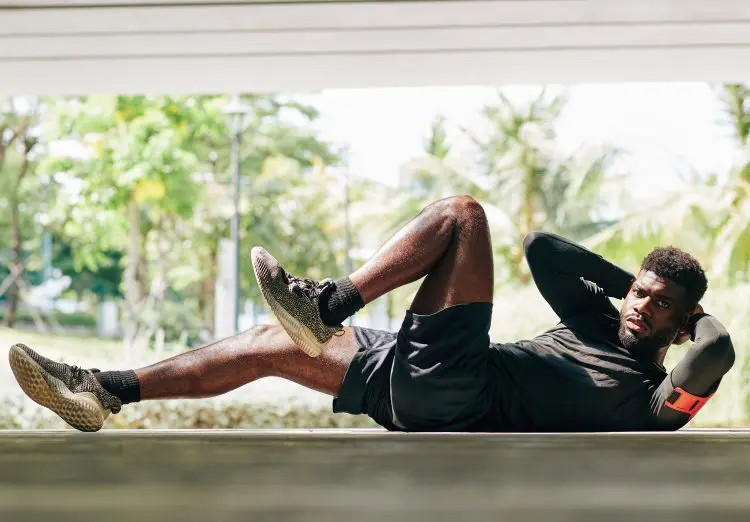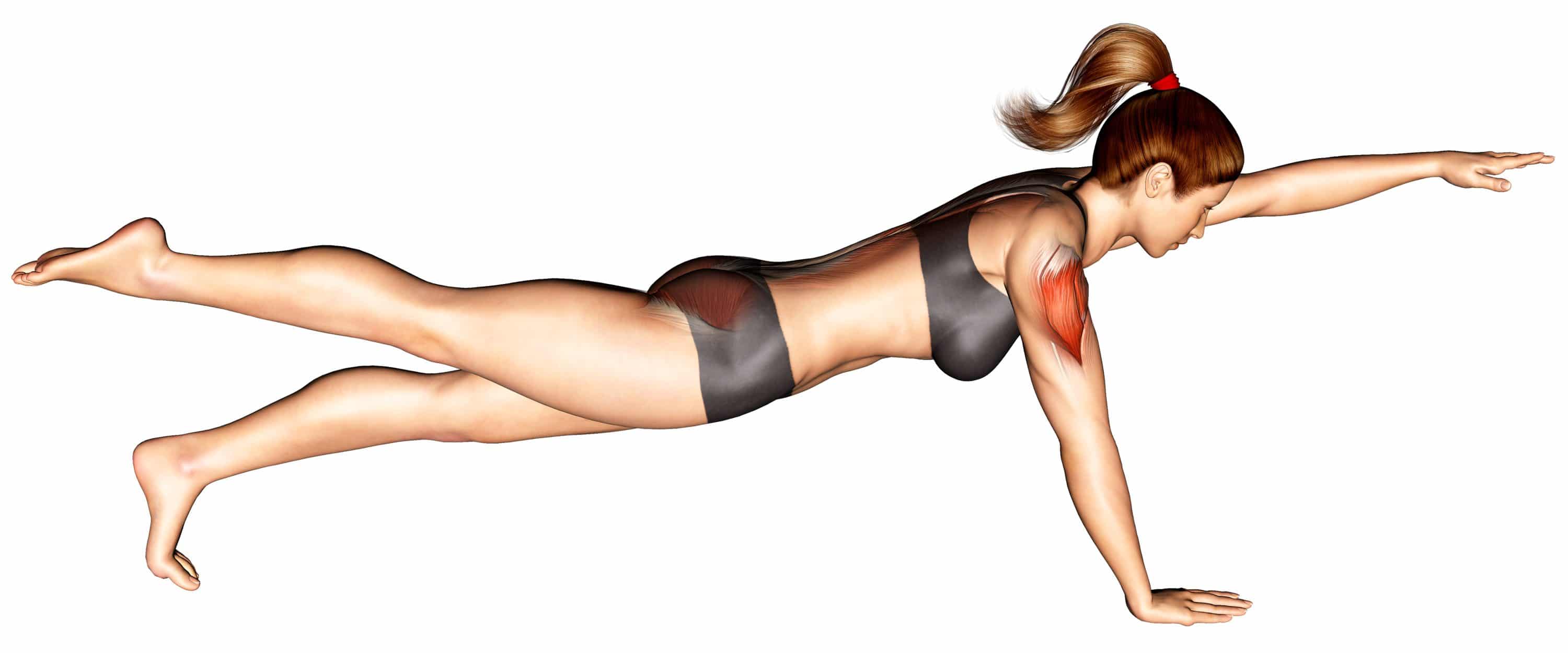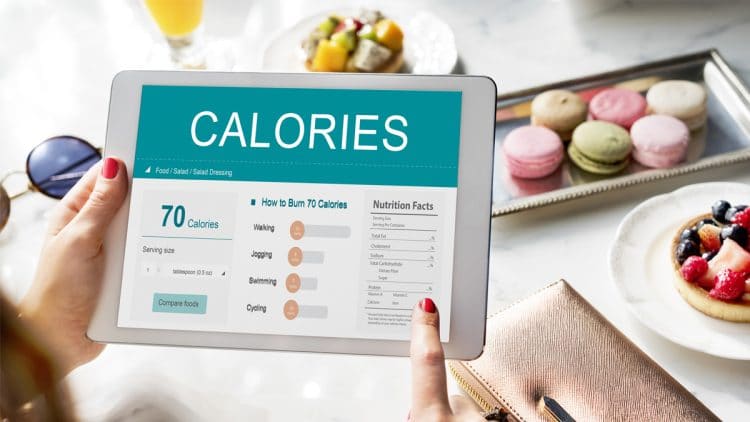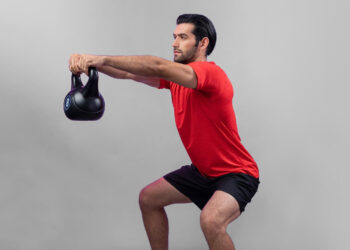Cankles, bingo wings, bubble butt, moobs – these are all slang terms for areas where fat can accumulate. While these terms are often somewhat humorous, they can also be upsetting, especially if you are someone who suffers from fat around your pecs (moobs – man boobs) or jiggly, soft triceps (bingo wings).
FUPA is an increasingly common slang term, this time describing fat around the lower abdomen. FUPA is short for Fat Upper Pubic Area and refers to the accumulation of fat below your navel.
Common in men and women, FUPA can be the result of childbirth, aging, and genetics. Losing a lot of weight very quickly could also cause FUPA.
In this article, we reveal the exercises and nutritional strategies that could help you lose your FUPA once and for all.
Exercises for Losing FUPA
Let’s get one thing straight from the outset – there is no such thing as spot reduction. Doing lots of leg raises or other “lower abs” exercises will not preferentially burn fat from the area below your belly button. Also, you can’t sweat off your FUPA by wearing a sauna belt or plastic sweat suit.
However, by adopting a holistic workout program designed to burn excess calories and strengthen your entire body, including your abdomen, you should be able to whittle away that annoying lower abdominal fat.
Level Up Your Fitness: Join our 💪 strong community in Fitness Volt Newsletter. Get daily inspiration, expert-backed workouts, nutrition tips, the latest in strength sports, and the support you need to reach your goals. Subscribe for free!
Here are TEN great exercises that either burn fat like a blowtorch or strengthen and tone your midsection.
1. Cardio
Cardio is essential for fat loss. It burns calories and fat and is also good for your general health. Most people should do cardio 3-5 times a week, aiming to accumulate the recommended 150 minutes over that time (1).
Both low-intensity steady-state cardio and high-intensity interval training can be effective, and you may even benefit from doing both of these types of exercise, e.g., LISS one day and HIIT the next.
Some of our favorite cardio options include:
If you prefer to do more traditional cardio, there is absolutely nothing wrong with jogging, running, cycling, rowing, ellipticals, and swimming.
2. Plank
Planks might not be the most exciting abs exercise, but there is no denying their effectiveness. The plank teaches you to brace your core, increasing resting abdominal tension. As you carve away your FUPA, planks will give you a flatter stomach.
Once you can hold a regular plank for 60 seconds reasonably easily, you are ready for a more intense workout. Try one-legged planks or the Russian Kettlebell Challenge (RKC) plank.
3. Bicycle Crunch
The bicycle crunches won’t magically melt your FUPA, but they do target the muscles that are underneath. The main advantage of this exercise is that you can do it anywhere and anytime as no equipment is required. It’s also quite a fast-paced exercise, so it may also raise your heart and breathing rate to burn more calories. It’s a good option for circuit training.
Learn how to do this effective abs exercise in this guide.
4. Bird Dog
The bird dog teaches you to stabilize your midsection while you move your arms and legs. Not only is it a great core exercise, but it also works your glutes, lower back, upper back, and shoulders. If you’ve mastered planks and are looking for a useful alternative, give this exercise a try.
How to do it:
- Kneel on all fours so your shoulders are directly over your hands and your hips are over your knees. Brace your core.
- Lift your left leg and right arm until they are parallel to the floor.
- Bring your arm and leg back in, touching your knee with your elbow or hand, and then repeat.
- You can also do this exercise using an alternating action, switching sides rep by rep.
- For a more intense workout, try high bird dogs.
5. Hanging Knee and Leg Raise
The problem with a lot of abs exercises is that, after a while, they are no longer hard enough to provide your muscles with sufficient overload. That’s because most involve lifting just your head and shoulders, which aren’t especially heavy.
Hanging knee and leg raises involve lifting heavier weights, and that’s good for your muscles. There are several hanging knee and leg raise options to choose from, ranging from bent knee raises using a captain’s chair to straight leg raises hanging from a pull-up bar.
Read all about hanging knee and leg raises here.
6. Rollout
If you have a strong core and are ready for a more intense challenge, rollouts could be the exercise for you. Rollouts are a sort of dynamic plank. You must work really hard to brace your abs and stabilize your spine as you extend your arms in front of you.
There are several rollout variations:
Read more about rollouts in our in-depth guide.
7. Kettlebell Swing
Kettlebell swings don’t directly target your abdominals, but this is still a useful FUPA exercise. Swings mostly work your glutes, hamstrings, lower back, and upper back. Training these large muscles simultaneously will elevate your heart and breathing rate, burning lots of calories. Also, kettlebell swings are good for your posture and will help you stand up straighter. This may make your FUPA less noticeable.
Learn how to do kettlebell swings here.
8. Burpee
While it’s safe to say that no one likes burpees, we also know that they are a very effective fat loss and conditioning exercise. Done correctly, burpees work virtually every muscle in your body, and that includes your core.
Because burpees are a bodyweight exercise, you can do them anywhere and anytime. Even 5-10 minutes of burpees a day could help you rid yourself of your FUPA.
Find out all there is to know about burpees in our detailed guide.
9. Thrusters
Thrusters are a lot like burpees in that they work all of your major muscles simultaneously. However, if you like to work out with weights, you may prefer thrusters to burpees. You can do thrusters with a barbell, dumbbells, kettlebells, medicine balls, or sandbags.
How to do it:
- Hold your weight in front of your chest. Stand with your feet roughly shoulder-width apart, toes turned slightly outward. Brace your core.
- Bend your legs and squat down until your thighs are roughly parallel to the floor. Do not round your lower back.
- Stand up and then press the weight up and overhead to arms’ length.
- Lower the weight back to your shoulders and repeat.
10. Medicine Ball Slams
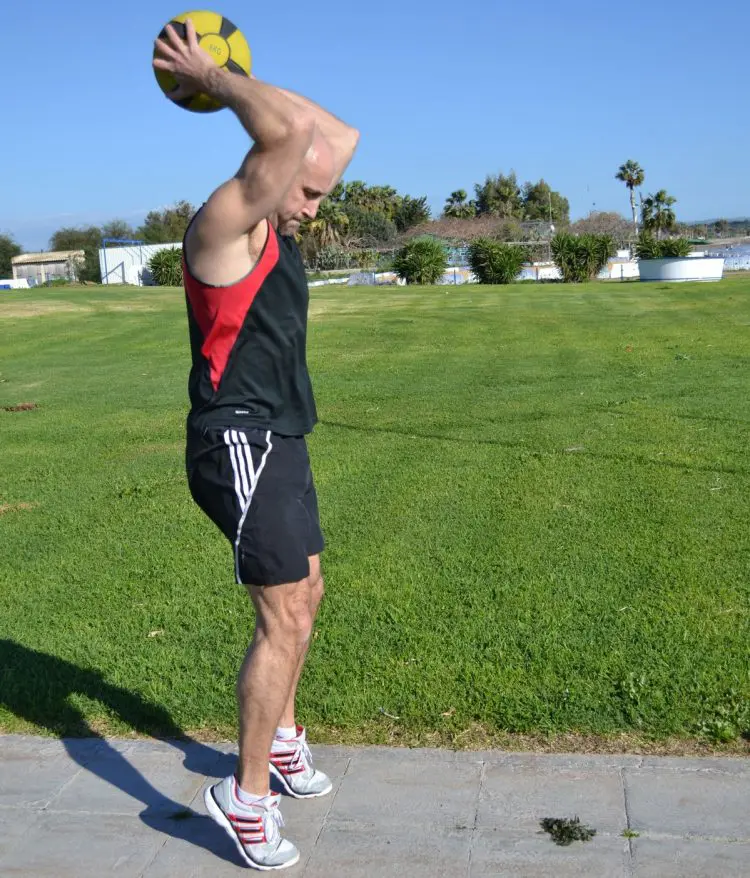
A lot of abs exercises are done slowly. That’s an excellent way to keep constant tension on the target muscles, but not so good for increasing your calorie expenditure and burning fat. Medicine ball slams hit your abs AND raise your heart and breathing rate, making them a very effective FUPA exercise.
Level Up Your Fitness: Join our 💪 strong community in Fitness Volt Newsletter. Get daily inspiration, expert-backed workouts, nutrition tips, the latest in strength sports, and the support you need to reach your goals. Subscribe for free!
How to do it:
- Stand with your feet about shoulder-width apart. Hold a medicine ball in your hands. Raise the all above your head and brace your abs.
- Putting your entire body into each throw, hurl the ball down at the floor just in front of your feet.
- Catch the ball as it bounces, raise it above your head, and repeat.
Here are 11 alternatives you can use when medicine ball slams are not possible.
FUPA Nutrition Tips
While exercise will definitely help you get rid of your FUPA, what you eat is important too. That’s because FUPA is accumulated fat, and fat is the result of consuming more calories than you need.
Exercise burns calories, but if you continue to eat too much, your progress may be slow or even non-existent.
Use the following tips to get your diet on track and make your workouts even more productive.
1. Create a Calorie Deficit
To force your body to use fat for fuel, you need to create a calorie deficit. This means eating fewer calories than you need to maintain your current weight. To do this, calculate your TDEE (total daily energy expenditure) and then subtract 300-500 calories from this number.
The easiest way to do this is by using an online calculator, like this one.
Once you know how many calories you need to eat to lose weight, use a food tracking app to ensure that you hit your target every day.
2. Eat for Fullness
Eating less can lead to hunger and cravings. You can minimize both by sticking to the suggested 300-500 calorie deficit. This is enough to trigger fat loss, but not so much that you’ll feel deprived or starving. That said, you can make things easier by eating for fullness.
That means:
- Eating protein at every meal
- Filling up on high fiber veggies
- Eating healthy fats with most meals
- Cutting down on sugar
- Eating healthy snacks between meals
- Eating slower and more mindfully
3. Eat Healthily
While you could lose weight by eating junk food, it’s not a good idea. Junk food is invariably high in sugar, fat, and salt and low in essential nutrients like vitamins and minerals. Your body needs more than just calories to sustain itself; it requires an abundance of micronutrients too.
A healthy diet leads to a healthier organism (you!), and the healthier you are, the better your body will be able to burn fat. Also, you will find that you have more energy for exercise and recover better from your workouts when you eat less junk food.
Try to eat less processed food and more natural food. Natural foods are usually lower in calories, more filling, and higher in nutrients than junk food.
4. Monitor Your Progress
We all respond to calorie restriction differently, and as accurate as TDEE Calculators are, they’re only an estimate of your caloric needs. Monitor your progress and adjust your food intake accordingly.
Ideally, you should lose about 1-2 pounds per week. If your rate of weight loss is much less than this, increase your calorie deficit. If you are losing weight faster, you can reduce your deficit slightly.
Don’t worry if weight loss is uneven or stalls for a few days or even a week. Losing weight is rarely a linear process. Instead, look for trends. So long as your weight decreases at an average of 1-2 pounds per week, you’re doing fine.
Don’t be tempted to slash your food intake to lose weight faster. Very low-calorie diets invariably lead to severe hunger. You might be able to ignore your appetite for a few days and even a week or two, but eventually, you’ll give in and break your healthy eating streak. This will undo all your hard work, and you could even end up gaining more fat than you have lost.
When it comes to weight loss, slow and steady is generally best, so be patient!
Sleep, Stress, NEPA, and FUPA
While exercise and diet are your primary weapons against FUPA, there are a couple other things to consider that could affect your progress:
1. Sleep
Too little sleep could make it harder to lose your FUPA. Lack of sleep can rob you of the motivation you need to work out and stick to your diet. Also, too little sleep can increase sugar and carb cravings while increasing insulin resistance and your propensity to store fat (2). Most adults should try to get 7-9 hours of sleep per night. For most of us, that means going to bed a little earlier.
Read more about sleep and fat loss here.
2. Stress
Prolonged and intense stress can lead to weight gain and make losing fat harder (3). Stress increases levels of the hormone cortisol, which leads to muscle loss and fat gain. A lot of people turn to food for solace when they are stressed.
Effective ways to reduce stress include:
- Meditation
- Yoga
- Spending time in nature
- Relaxing hobbies
- Breathing exercises
- Avoiding excess caffeine
- Talking to a trusted friend or family member
- Avoiding stressful situations or people
- Getting enough sleep
- Eating healthily
- Learning to delegate
- Avoiding perfectionism
3. NEPA
NEPA is short for non-exercise physical activity and is often overlooked in weight loss and fat burning. Even if you work out for an hour five days a week, you could still be sedentary. Sedentarism makes it much harder to lose weight because your calorie expenditure will be lower than it could be.
NEPA, which is also known as NEAT (non-exercise activity thermogenesis), burns extra calories despite being so low intensity that it’s not tiring. The more NEPA you can accumulate during your day, the easier you’ll lose your FUPA (4). Simply sitting less and moving more could help you lose weight faster.
Anything that gets you up and moving counts as NEPA. Examples include:
- Walking for transport
- Cycling for transport
- Playing with your kids
- Washing your car
- Gardening
- Chores around the house
- Carrying groceries
- Cleaning
- Take the stairs and not the elevator
- Sit on an exercise ball instead of a chair
FUPA Exercise and Nutrition Tips – Wrapping Up
While you cannot target FUPA specifically, there are plenty of things that you can do to lose fat from all over your body, including your lower abdomen. Core exercises will help tone and strengthen the underlying muscles, while cardio and strength training will burn stored calories and help you shed those excess pounds.
As well as diet and exercise, you may need to make some changes to your lifestyle, too. Getting enough sleep, reducing your stress levels, and avoiding sedentarism will make losing your FUPA easier.
However, you also need to be patient. Trying to lose fat fast invariably results in failure. After all, very strict diets are almost impossible to stick to for more than a couple of weeks, and losing FUPA will take longer than that.
Instead, adopt a sustainable, long-term approach so that you not only lose those unwanted pounds but keep them off for good, too.
References:
1– Centers for Disease Control: How Much Physical Activity Do Adults Need https://www.cdc.gov/physicalactivity/basics/adults/
2– PubMed: The Association Between Sleep Duration and Weight Gain in Adults: A 6-Year Prospective Study from the Quebec Family Study https://www.ncbi.nlm.nih.gov/pmc/articles/PMC2279744/
3– PubMed: Effects of Chronic Social Stress on Obesity https://www.ncbi.nlm.nih.gov/pmc/articles/PMC3428710/
4– PubMed: The Role of Non-exercise Activity Thermogenesis in Human Obesity https://www.ncbi.nlm.nih.gov/books/NBK279077/


